
New Items - Photos, page 7
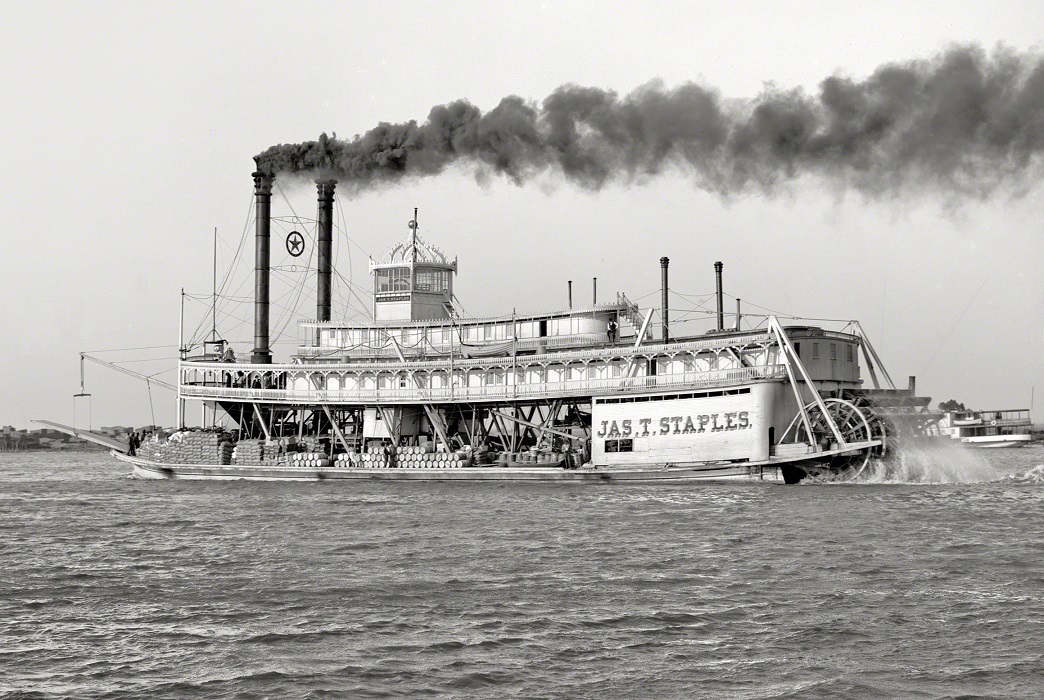
Mobile, Alabama. "River packet Jas. T. Staples
Sternwheeler steamboat (known as "Big Jim") launched at Mobile in 1908; plied the Tombigbee River between Demopolis and Mobile; destroyed in a boiler explosion at Powe's Landing in 1913 at a cost of 26 lives, one week after its owner had killed himself with a shotgun. 8x10 inch dry plate glass negative, Detroit Publishing Co. SHORPY
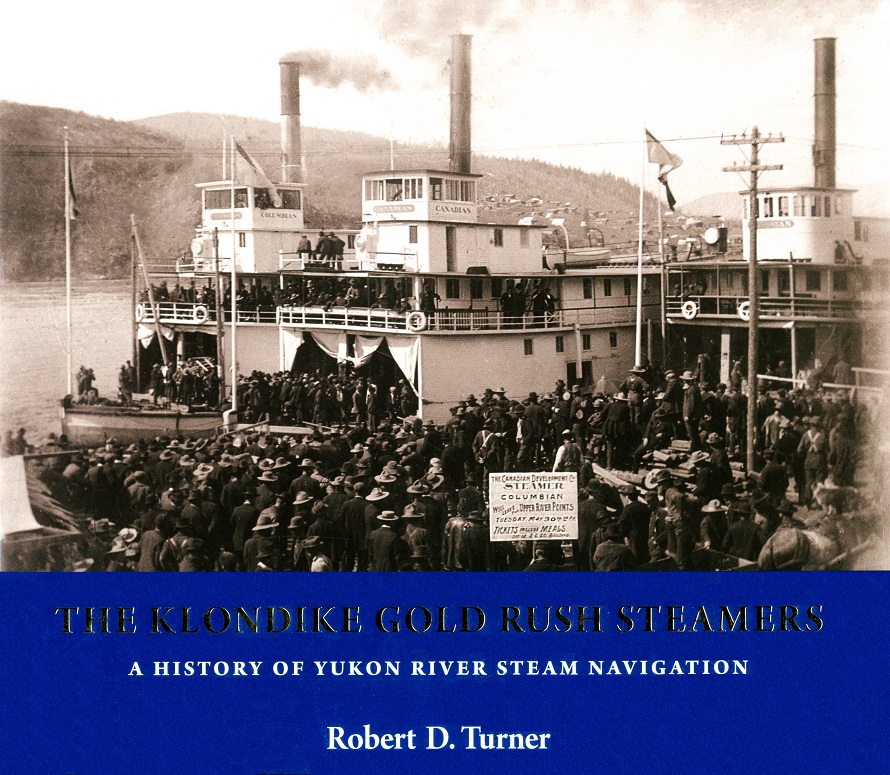
Klondike Gold Rush Steamers: A History of Yukon River Steam Navigation
By Robert D. Turner
IMAGE ON FRONT OF DUST JACKET:
The steamers Columbian, Canadian and Victorian at Dawson, 1899
—Henry J. Woodside, 881, Library & Archives Canada, PA-016173.
Harbour Publishing Company, 2020
ISBN-10 1550178873
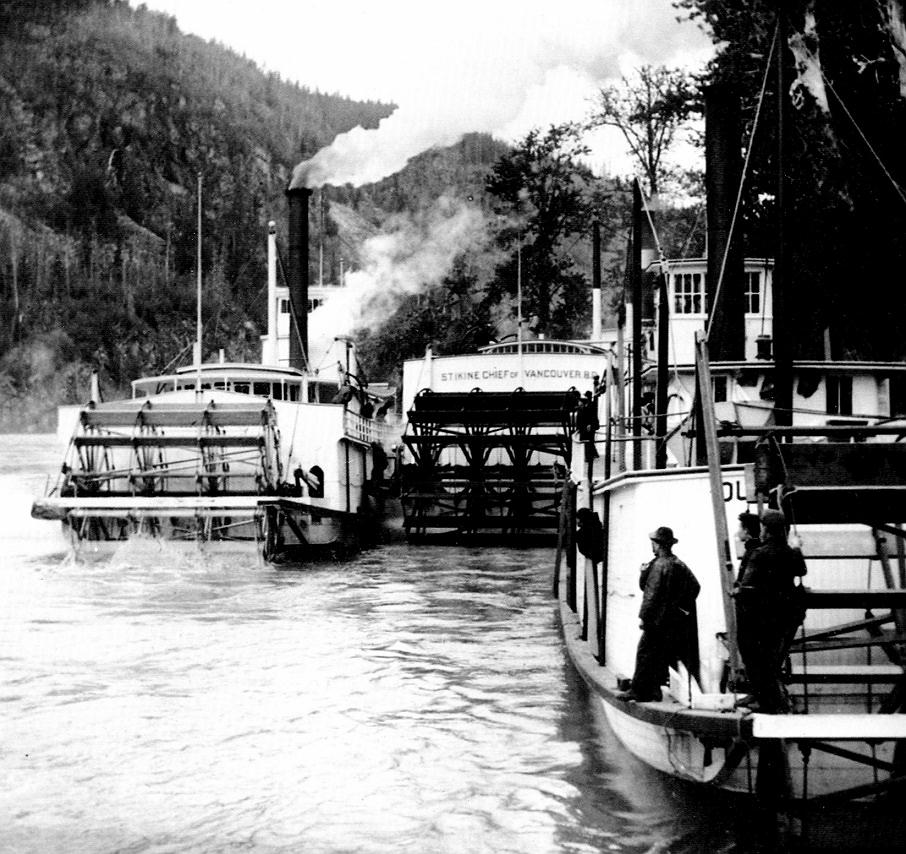
3 Klondike sternwheelers on the Stikine River SRATHCONA, STIKINE CHIEF & DUCHESNAY
Another first rate photo from the excellent pictorial history book -
Klondike Gold Rush Steamers: A History of Yukon River Steam Navigation
By Robert D. Turner
Harbour Publishing Company, 2020
ISBN-10 1550178873
Picture and caption are both on page 87
The Stikine was a difficult river for steamer navigation at best, and with the rush of vessels trying to make frequent trips between Wrangell and Telegraph Creek, the most challenging parts of the run through the Stikine Canyon became crowded. This fascinating photograph by Henry Woodside shows the sternwheel steamers Strathcona of the Hudson's Bay Company, the Stikine Chief and the CPR's Duchesnay waiting their turns to proceed upstream through the canyon towards Glenora and Telegraph Creek. A traffic control system was developed to prevent steamers colliding in the confines of the canyons and narrow channels.
- Henry J. Woodside, 728, Library & Archives Canada, PA-16086
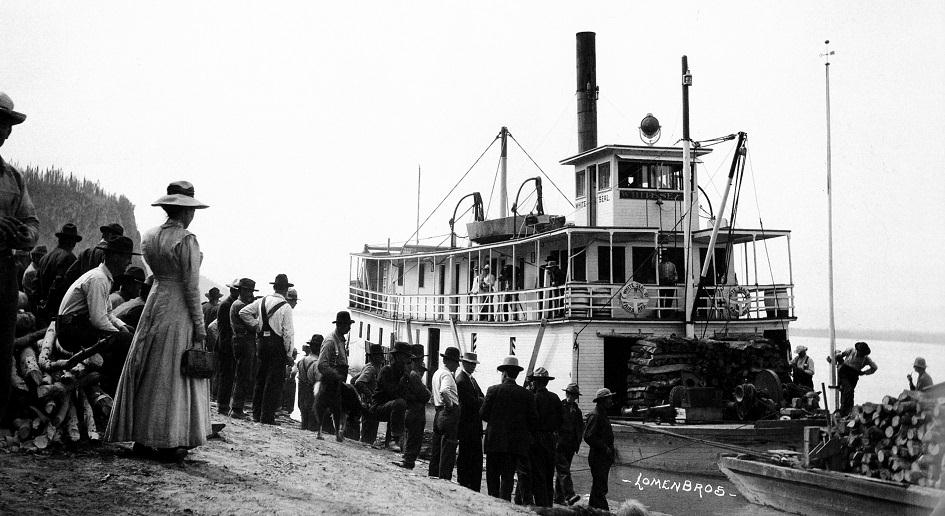
Klondike steamboat WHITE SEAL at Ruby, Alaska
Another favorite photo with caption both on page 232 from:
Klondike Gold Rush Steamers: A History of Yukon River Steam Navigation
By Robert D. Turner
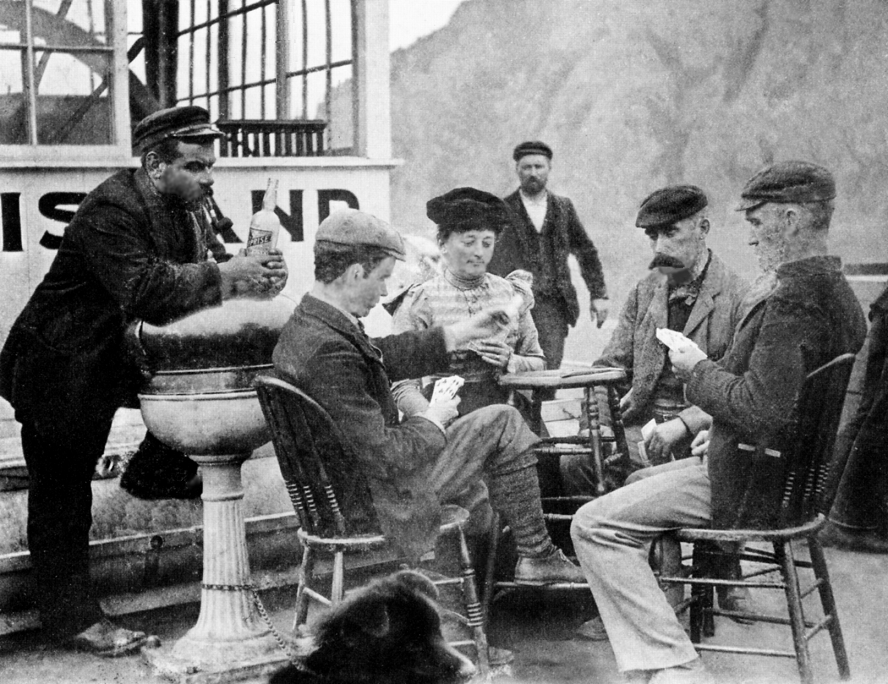
A card game aboard the Klondike steamboat ROCK ISLAND
On the Klondike steamboat ROCK ISLAND four passengers are playing cards, using a stool as a table as they sit in front of the pilot house while an officer with bottle in hand leans on the binnacle that a dog is chained to. U.S. GEOLOGICAL SURVEY
Photo & abridged caption on page 127 from: Klondike Gold Rush Steamers: A History of Yukon River Steam Navigation, By Robert D. Turner
A young woman with a beautiful summer dress, a fashionable hat and perhaps and handbag, waits to board the steamer White Seal for an outing or day's excursion at Ruby, Alaska. Excursions, or trips in general, were so very important for the residents of the communities throughout the Yukon Basin. They were where and when people met socially, enjoyed music and perhaps dancing and refreshments. Where people enjoyed a change from the long hard-work of daily life. These days were eagerly anticipated, and cherished by those who celebrated them; something now from a distant past.
Lomen Bros., Glenbow Museum, NC-1-204
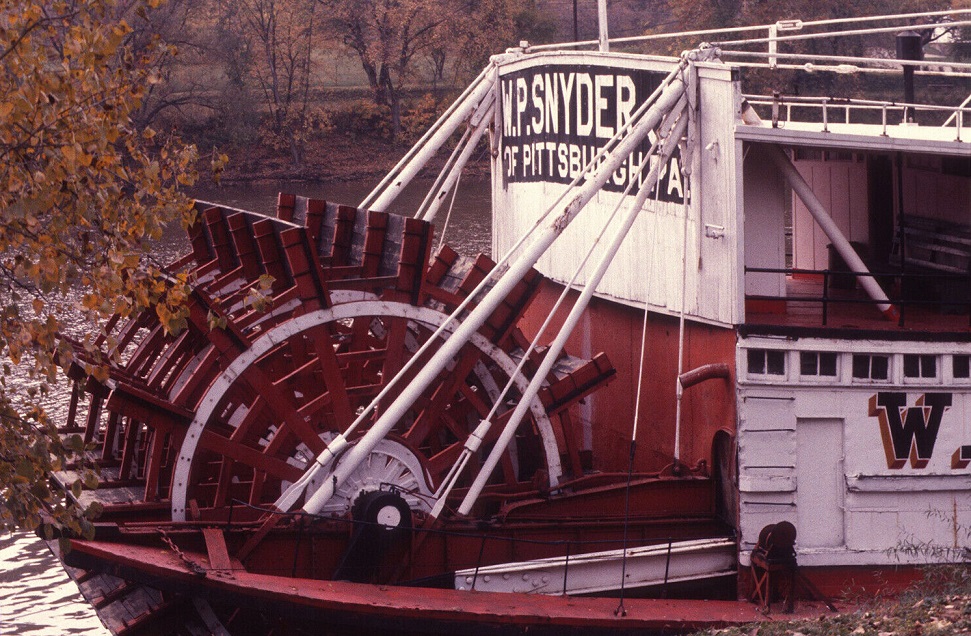
1980's 35mm color slide - W.P. SNYDER JR. from an eBay auction.
The wooden bulkhead over the paddlewheel with W.P. SNYDER JR. OF PITTSBURG, PA. painted on it was deteriorating and was later rebuilt and repainted during one of the restorations of the towboat.
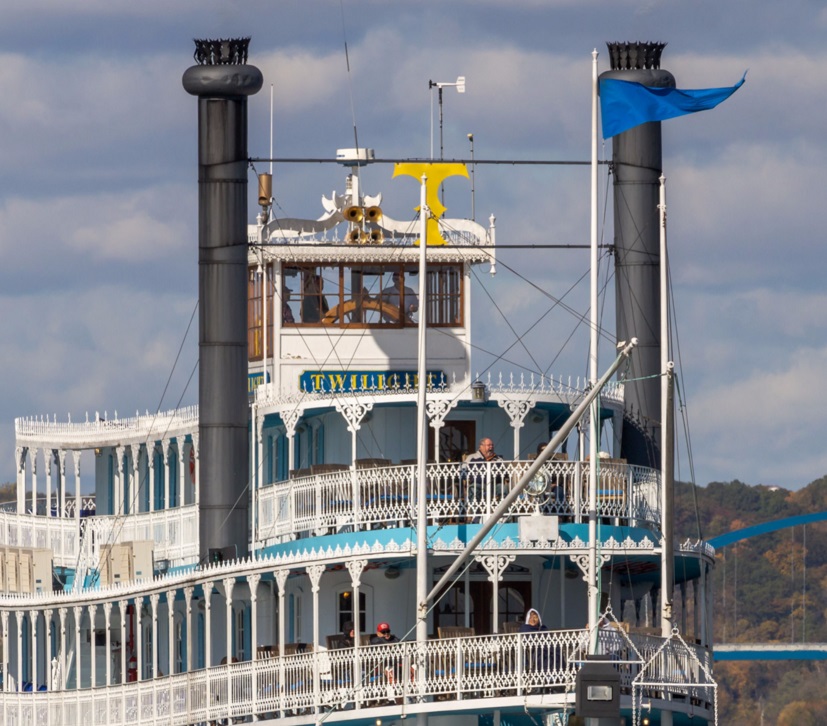
TWILIGHT, a photo by Phil Nylin if Sabula, IOWA plus a closer detail of the image featuring the stacks and pilot house.
This is featured on the cover of the RIVERBOAT TWILIGHT's 2021 calendar kindly provided by Carrie Stier, owner of the TWILIGHT.
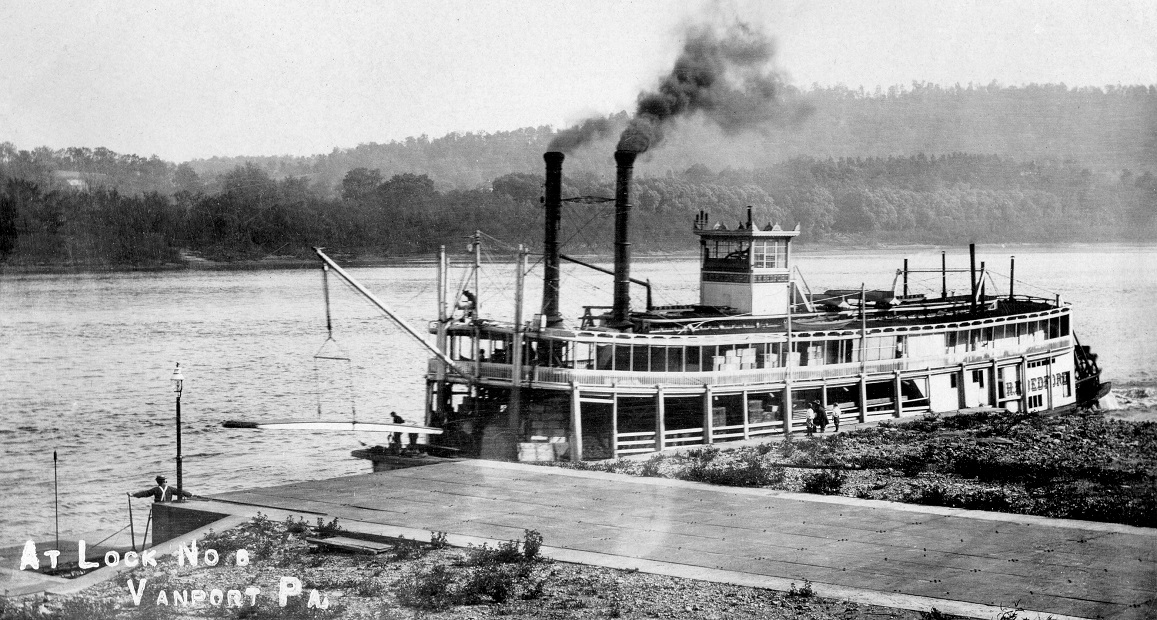
Steamer H.K. BEDFORD in Lock No 8 at VANPORT Pennsylvania 1909
Postmarked VANPORT, PA.
Sept 11, 1909 P.M.
Hello Gay how are you getting along all by your lonesome? I have been canning fruit ever since I came home I looked for a card from Mama or Mabel but haven't got any yet.
Gay, this is the boat we will taken our trip on next Summer. This is the dam below our house a piece.
Pearl
Addressed to:
Miss Gaymill Selfridge
56 North Union
Allliance, Ohio
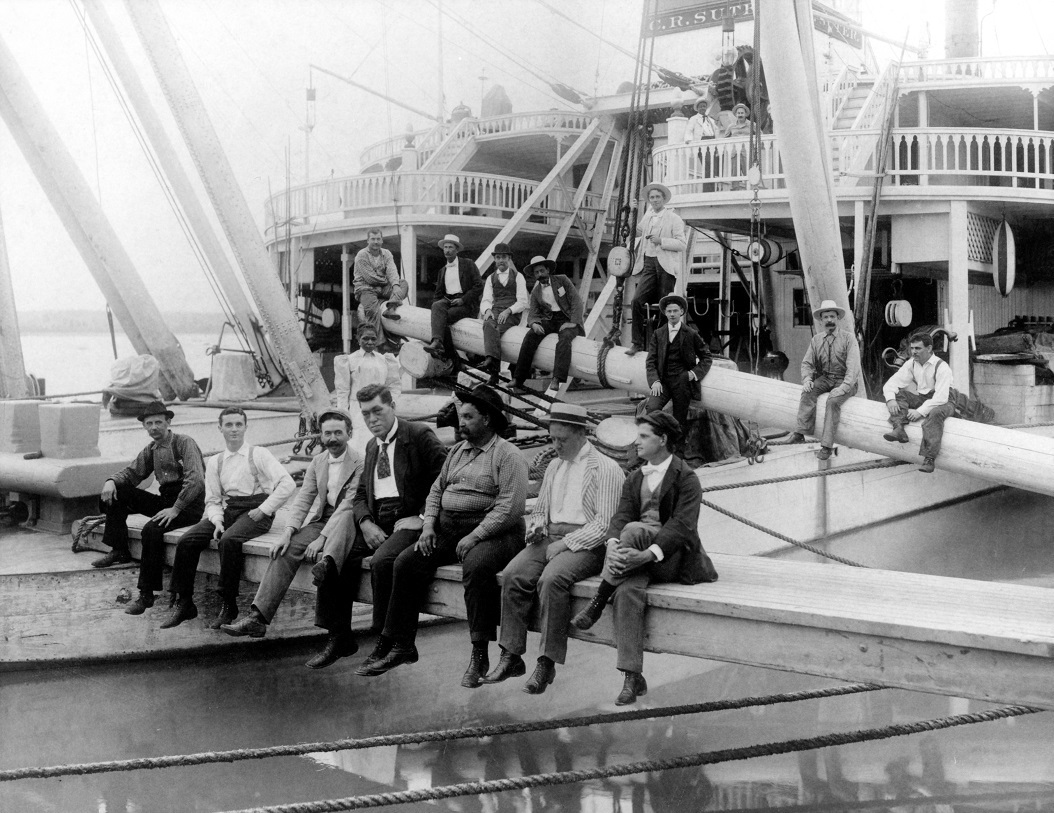
Missouri River Snagboat C.R. SUTER's crew
The crew of the snagboat C.R. SUTER posed for the original photo during the late 1880's. I bought the original of this photograph many years ago and had it framed with vintage molding. They are an interesting bunch of 17 classic old-time rivermen and one lady dressed in white.
The attached file I scanned from a print produced from the 4 x 5 negative that Ralph DuPae of La Crosse, Wisconsin had made at the U of W's Murphy Library when I loaned the original to Ralph in the 1980's.
C.R. SUTER
Way's Packet Directory Number 0774
Sidewheel snagboat (named for Major Charles R. Suter of the U.S. Corps of Engineers)
Was built at Pittsburgh, Pennsylvania in 1888 187 x 52 x 7
Had compound oscillating engines, the piston rods connected directly to the cranks, the cylinders oscillating on trunions.
It was owned by the Missouri River Commission and used on the Missouri River. Rebuilt and renamed MISSOURI and after many years as the MISSOURI, burned at Gasconade, Missouri on July 29, 1928.
JOHN FRYANT
(King of Steamboat Model Makers)
RESPONDED TO THIS PHOTOGRAPH:
Hi Dave,
What a neat photo! Everything looks brand new and freshly painted. Even the large pulley blocks look like they were never used. Everyone in the photo looks dressed up. And who was the black woman? Don't you wish one of them could talk to us?
John
THE FOLLOWING ACCOUNT OF THE CAREER OF MAJOR CHARLES R. SUTER IS EXCERPTED FROM:
When the U.S. Corps of Engineers came to the Missouri River
Published Jan. 16, 2015
Historical Vignette: The Engineers in the Missouri Omaha District
Fact Sheet Article View (army.mil)
Major Charles R. Suter, who followed Captain James H. Simpson to the supervision of Western rivers engineering projects in 1873, picked up where Captain Charles W. Howell had left off on the Missouri River. Suter faced an immense task. His office in St. Louis dealt with obstructions on the lower Mississippi and Arkansas Rivers as well as the Missouri. His work on the Missouri, which extended over a decade in various capacities, involved several specific improvements as well as a general investigation of the river up to Sioux City and development of a long-range program to aid navigation. Most of the improvements carried out by Suter concentrated on the lower reach of the river between Kansas City and St. Louis. He did devote some of his efforts to upstream projects, among them stabilization works opposite Nebraska City, Nebraska, and farther upstream at Sioux City and Vermillion, Dakota Territory, as well as snagging at a few locations. Suter learned a great deal about the Missouri during his tenure. He overestimated its length at "something over 3,000 miles" but understood the significance of his work. "The importance of the subject," he wrote in his 1881 summary of his work on the river, 'can hardly be overestimated as this river is the longest of any in the United States." Suter attributed the large discharge of the river to the vast area of the basin and the snows and ice near its headwaters. The river's most salient features included "the remarkable impetuosity of its current" and its slope of about 1.5 feet per mile, which Suter thought considerable for so large a stream. The rapid current-as fast as 10 miles per hour-and unstable banks made the river unusually turbid and earned it the name of Big Muddy: " It is, in fact, the greatest silt-carrier in the country, and the enormous mass of sediment which it brings forward forms the great bulk of that received by the Mississippi from its tributaries." According to Suter, the river flooded twice annually. The April flood, "extremely violent" and brief, lasted no more than 7 to 10 days and resulted from the snowmelt. The second flood, in June, rose higher and stayed longer. Local rains played a large role in it. "Both," Suter noted, " had sufficient power to produce tremendous effects and bring about the most astonishing changes." He concluded that the difficulties of navigation resulted from the lack of sufficient scouring power at specific locations. As a remedy, he suggested a system of channel improvements to concentrate the flow of water at these places. Although he thought this approach the most economical, he recognized the problems, among them the fluctuations of the river and particularly the floods which might render any construction useless. Nevertheless, he hoped to use the river to deepen and maintain its own channel while cleaning itself of snags. Through such a program, Suter expected to maintain a uniform navigation depth of 12 feet all the way to Sioux City.
Suter thought the program would cost about $10,000 per mile or $8 million for the entire river to Sioux City. He wanted to start at the mouth of the river and work upstream, ideally with appropriations that covered reaches of at least 50 miles at a time. Above all , he wished to avoid a piecemeal approach: " If the money is to be frittered away at isolated points, and the improvement carried on in a disjointed and arbitrary manner, no estimate of the ultimate cost is possible. " While Suter still worked on the river downstream of Sioux City, the Chief of Engineers sent Lieutenant Edward Maguire far upstream to Fort Benton.
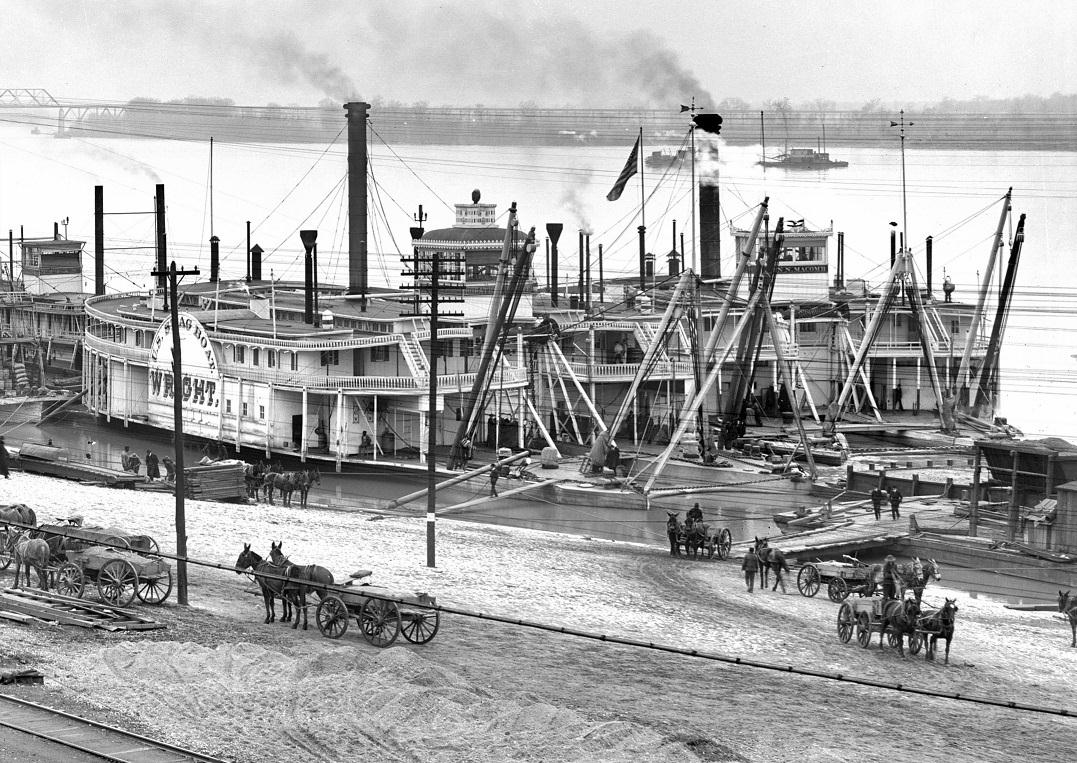
Detail of Snag Boats
HORATIO G. WRIGHT and JOHN N. MACOMB
Memphis, Tennessee, 1906.
Detail from an 8 x 10 inch dry plate glass negative
Detroit Publishing Company.
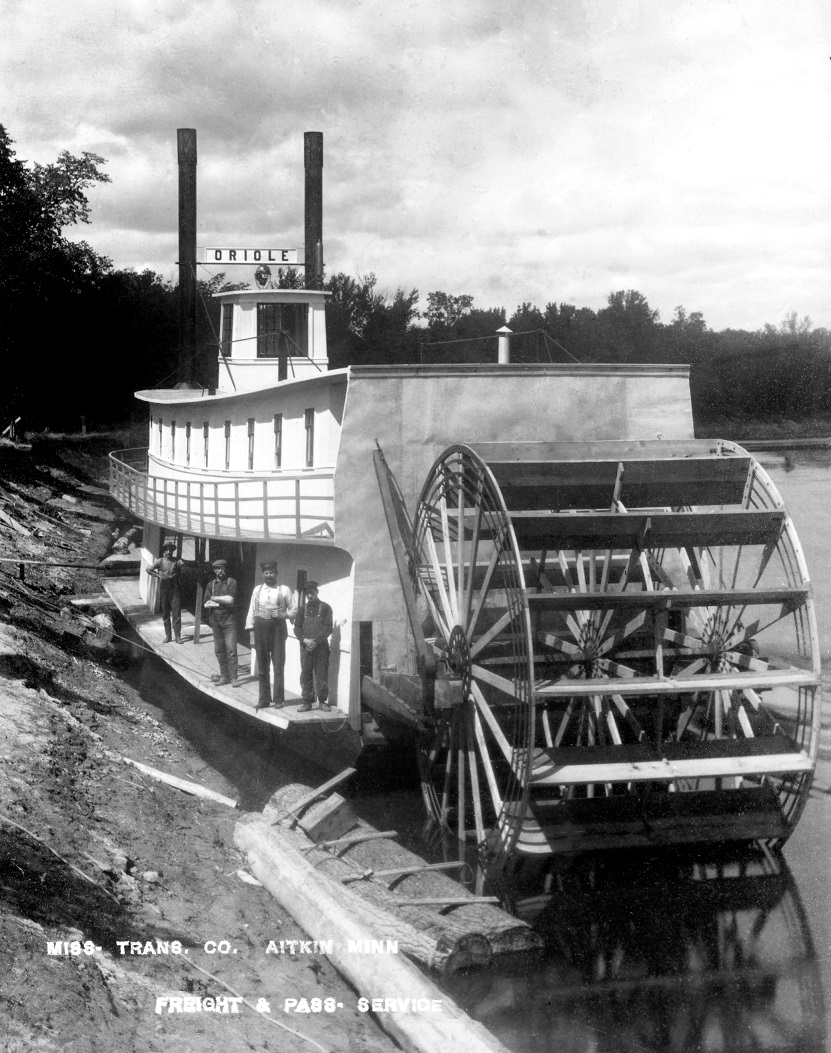
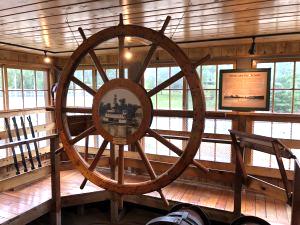
Received and scanned today, a real photo post card of the ORIOLE, postmarked 18 September 1908 Libby, Minnesota. Sternwheel and 4 rugged crewmen make this a picturesque image aboard a strictly "no frills" steamboat.
ORIOLE (1908-1941)
Sternwheel
Towboat/Snagboat/Dredge
Way's Steam Towboat Directory Number T1969
Built circa 1908-1914 by Mississippi Transportation Company at Aitken, Minnesota. Designed by Captain Charles D. Viebahn Ran on the Mississippi River & Big Sandy Lake. She was purchased in 1910 by the U.S. Corps of Engineers St. Paul. Operated out of Libby, Minnesota and first served as a survey steamer. She was listed as a snagboat in 1914 and by 1916 she had been rebuilt into a bucket dredge. George Matoon, a Big Sandy Lake resort owner, bought the ORIOLE minus her machinery in 1918 and used her as a summer hotel on the riverbank, until the summer of 1941. The pilot wheel is now in the Visitor's Center in the Sandy Lake lock house (current photo credited to Julianne G. Crane attached).

With the exception of images credited to public institutions,
everything on this page is from a private collection.
Please contact Steamboats.com for permission for commercial use.*
All captions provided by Dave Thomson, Steamboats.com primary contributor and historian.
